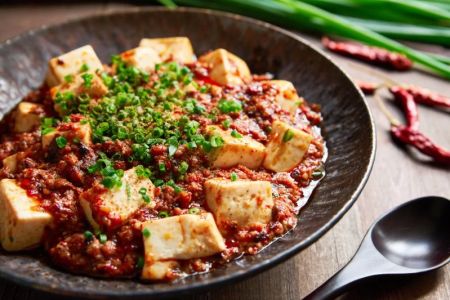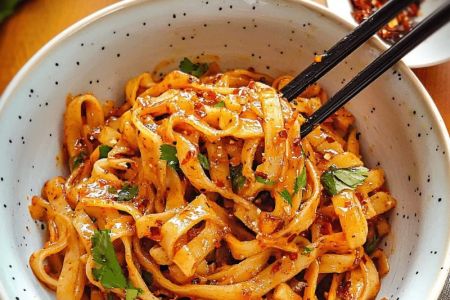- 1-Fusion-Chinese-Food-Overview
- 2-Cultural-Roots-and-Evolution
- 3-Popular-Fusion-Dishes-in-America
- 4-Impact-on-American-Food-Scene
- 5-Finding-Authentic-Fusion-Food
1. Understanding Fusion Chinese Food in America
Fusion Chinese food in America is a vibrant culinary phenomenon where traditional Chinese flavors meet American ingredients and cooking styles. Unlike classic Chinese cuisine, which strictly adheres to regional authenticity, fusion Chinese food blends elements from different culinary traditions to create innovative and exciting dishes. This fusion reflects the dynamic cultural exchange inherent to immigrant communities and evolving food trends.
The appeal lies in the balance between honoring Chinese culinary heritage and embracing local tastes and preferences. For example, many restaurants experiment with combining Sichuan spices with American barbecue techniques or infusing dim sum with Western ingredients like cheese or avocado. This culinary creativity not only expands the range of flavors but also makes Chinese food more approachable for a wider audience in the U.S.
The rise of fusion cuisine is a mirror to changing American palates
As Americans seek new and diverse dining experiences, fusion Chinese food caters to adventurous eaters eager to try something unique yet familiar. The innovation is not limited to fine dining; it is thriving in casual eateries, food trucks, and home kitchens alike.
2. Cultural Roots and Evolution of Chinese Fusion Cuisine in America
The history of Chinese food in America stretches back over a century, with early immigrants establishing Chinatowns and traditional eateries. Over time, as generations integrated and adapted, the food naturally evolved. Fusion Chinese food is the latest chapter in this evolution, influenced by both cultural preservation and assimilation.
In cities like Los Angeles, New York, and San Francisco, fusion Chinese restaurants reflect the multicultural landscape, where chefs and home cooks creatively mix ingredients like local seafood, American-style grilled meats, and traditional Chinese sauces. The evolution is also driven by the younger generation of Chinese Americans who bring new perspectives and culinary skills learned from global food trends.
Case Study: The Rise of Asian Fusion Chains
Popular chains such as P.F. Chang’s and Panda Express have incorporated elements of fusion in their menus to appeal to mass markets. While sometimes criticized for commercializing Chinese food, these chains have also played a role in familiarizing the public with hybrid dishes and opening doors for more authentic fusion concepts.
3. Popular Fusion Chinese Dishes That Define the Trend
Several dishes stand out as icons of fusion Chinese food in America. For example, General Tso’s chicken, which originated in New York’s Chinese immigrant community, is a perfect example of sweet, spicy, and tangy flavors tailored for American tastes but inspired by Hunan cuisine. Similarly, dishes like orange beef, Chinese tacos, or bao stuffed with Western-style fillings showcase the inventive blending of cuisines.
Chefs are also experimenting with plant-based versions of classic Chinese dishes, merging vegan trends with traditional flavors. This experimentation enriches the fusion landscape, making it not just about taste but also about dietary preferences and sustainability.
Personal Insight: Fusion as a Reflection of Identity
For many Chinese American chefs, fusion cuisine is more than just food—it’s a way to express cultural identity, navigate dual heritage, and share their story through flavors. This personal touch brings authenticity and depth to fusion dishes beyond mere novelty.
4. How Fusion Chinese Food Influences the Broader American Food Scene
Fusion Chinese food is reshaping American dining culture by introducing bold new flavors and encouraging culinary experimentation across cuisines. Its influence can be seen in the growing popularity of Asian-inspired dishes in mainstream restaurants and grocery stores.
Moreover, fusion dishes have helped dismantle stereotypes about Chinese food being limited to a few standard dishes. By expanding the culinary vocabulary, fusion Chinese food fosters appreciation for diversity within Chinese cuisine itself and promotes cultural dialogue through food.
Professional Perspective: The Role of Innovation in Culinary Arts
Experts note that fusion cuisine challenges chefs to maintain balance—honoring traditional techniques while exploring new ideas. This delicate dance drives culinary innovation, making fusion Chinese food a key player in America’s evolving food identity.
5. Where to Experience Authentic Fusion Chinese Food and Resources
Finding genuine fusion Chinese food can be a rewarding journey. Authenticity here means creativity grounded in respect for Chinese culinary roots. Urban food districts, fusion pop-up events, and specialized restaurants often offer the most exciting dishes.
For those looking to explore or purchase ingredients, cookware, or even discover trusted restaurants, Chinese Food provides comprehensive recommendations tailored for fusion cuisine enthusiasts. Their curated selections help users navigate the diverse market, ensuring access to the best products and services.
Tips for Exploring Fusion Chinese Food
When trying fusion dishes, approach them with an open mind and curiosity about the cultural stories behind the food. Engage with chefs or food communities to deepen your understanding and appreciation.







